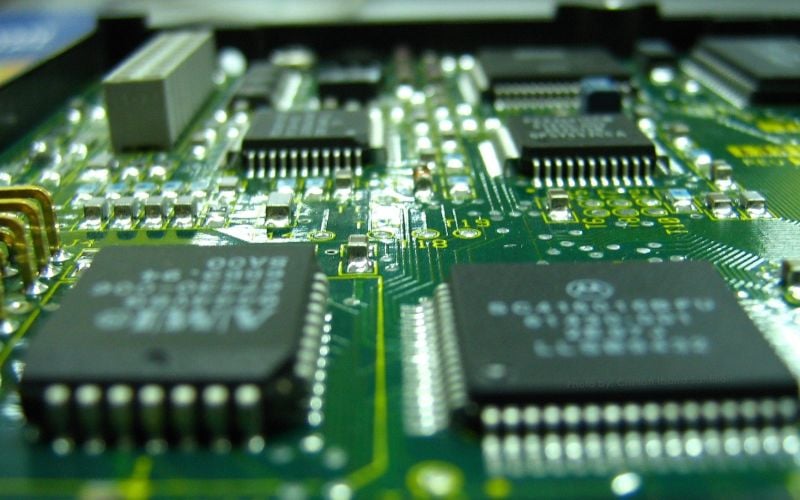Opinion: Bring the chips back
By Mitchell Gorodetsky
Tweet
The US, despite its claim to the role of a world leader, has fallen short in past decades within the crucial industry of semiconductor manufacturing. Based on reports conducted by the Semiconductor Industry Association (SIA), the US today accounts for only 12% of global chip production, compared to 37% in 1990. Manufacturing is responsible for approximately “45% of the value added... [within] the global semiconductor industry," yet the US has become increasingly reliant on microchip imports from East Asian nations such as Taiwan, China, and South Korea.
Fortunately, since the passage of the CHIPS and Science Act under the Biden administration in August 2022, the US has been on the road to manufacturing recovery.
For good reason, there exist concerns over the cost of constructing fabs. The World Trade Organization (WTO) 2023 GVC Report highlights the heavy investment into Analog, Memory, and Logic fabs, which often reach price tags ranging from $5B for Analog fabs to $20B for Memory and Logic. High prices, coupled with the initially poor financial support from the US, with government incentives covering less than 15% of capital costs, pushed US-based firms to move production to East Asia.
The offshoring of chip manufacturing provided R&D firms with tax credits and incentives that consistently covered 30% of capital costs as well as a cheaper labor base. In essence, it was simply beneficial business.
However, the proximity of manufacturing centers to Research and Development (R&D) firms is a strong determinant of a nation’s influence within a STEM-oriented industry. Efficient progress in chip design, especially with the fields of AI and supercomputing continuing to grow in demand, requires close cooperation between R&D and manufacturing centers, something that might be difficult with the space of an ocean between the western US, where top design firms AMD, Intel, and NVIDIA are located, and the manufacturing hub of East Asia. The CHIPS and Science Act addresses the pertinent issue of cost via increased public incentive, having garnered a total of $200 billion in investment funds for “dozens of projects across 20 states," as well as providing a 25% investment tax credit for chip R&D firms that prioritize manufacturing operations within the US.
The benefits of reshoring our chip manufacturing extend beyond supply chain efficiency, however, as the US workforce also stands to win from this industry shift. A recent White House report on the state of the semiconductor workforce pointed at an average growth in employment of 4.3% per year since 2021, bringing the US semiconductor industry headcount to approximately “203,000 workers in 2023." SIA has further projected a job increase as substantial as 33% will be achieved by 2030, with an additional 115,000 jobs entering the market.
Investment in domestic chip manufacturing is neither a simple nor cheap endeavor, but it is one worthwhile. Increasing the number of fabs within US borders would seem to benefit the semiconductor industry greatly, and continue to develop the chip technology that is the backbone of our modern world.
Mitchell Gorodetsky is an Engineering student at Texas A&M University pursuing Mechanical Engineering with interest in Supply Chains and Logistics.
![]()